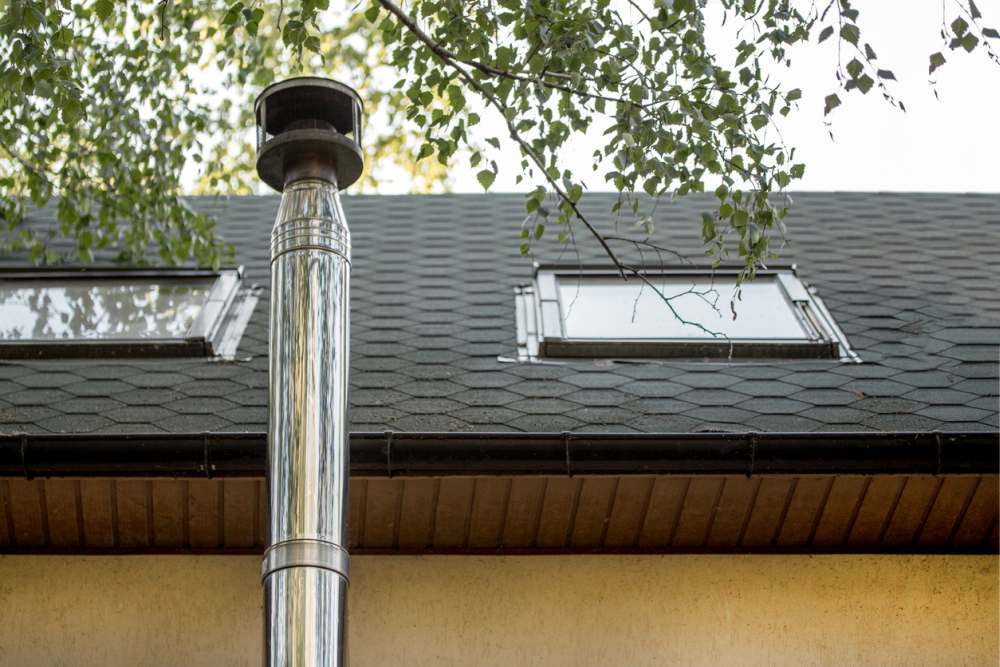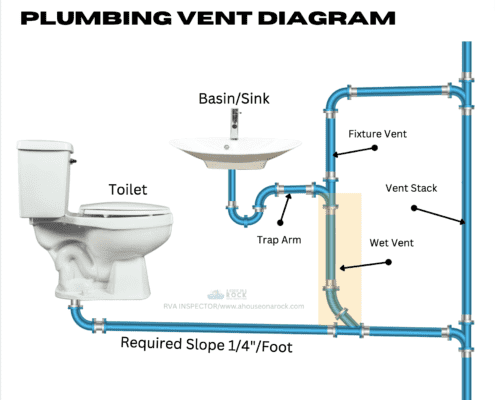How Adequate Ventilation is Crucial in Plumbing Systems
How Adequate Ventilation is Crucial in Plumbing Systems
Blog Article
This great article which follows about What Is A Plumbing Vent & How Do They Work? is pretty much engaging. Try it and draw your own personal assumptions.

Appropriate ventilation in plumbing systems is commonly ignored, yet it is vital for preserving the functionality and safety of your home's plumbing. Ventilation aids control air pressure, prevent the buildup of dangerous gases, and make sure the effective elimination of waste. In this guide, we will discover the value of correct pipes air flow, how it works, and the benefits it gives your pipes system.
Understanding Ventilation in Pipes
Ventilation in pipes describes the network of pipes that permit air to stream via the drain system. These vents serve several functions, consisting of managing air pressure within the pipelines, preventing drain gases from getting in the home, and aiding in the smooth flow of wastewater.
Exactly How Air Flow Functions in Plumbing Solutions
Air Pressure Law
Proper ventilation maintains well balanced atmospheric pressure within the plumbing system. When water moves through pipelines, it displaces air. Without ample air flow, this variation can develop adverse stress, resulting in reduce drains or siphoning of water from catches, which can trigger undesirable odors to leak right into the home.
Preventing Sewage System Gas Accumulation
Among the most vital functions of plumbing vents is to stop sewage system gases, such as methane and hydrogen sulfide, from collecting within the home. These gases can position serious health and wellness threats and are highly flammable. Vent pipes enable these gases to escape safely outside.
Assisting in Waste Elimination
Air flow helps in the reliable elimination of wastewater by preventing airlocks in the water drainage system. When air can move easily through the vents, it permits water and waste to stream smoothly via the pipes, decreasing the risk of blockages and back-ups.
Kinds Of Pipes Vents
Main Heap Vent
The main stack air vent, likewise referred to as the vent pile, is the main air vent in a plumbing system. It expands from the primary drainpipe line up with the roofing system, allowing gases to get away and fresh air to go into the system.
Branch Vent
Branch vents link to the major stack vent and offer specific fixtures, such as sinks, toilets, and showers. These vents make sure that each component has adequate ventilation to function appropriately.
Air Admission Shutoff (AAV).
An Air Admission Shutoff (AAV) is a one-way valve that enables air to go into the plumbing system without the requirement for a standard air vent pipeline expanding via the roof. AAVs are commonly made use of in renovations or areas where mounting a basic air vent is impractical.
Signs of Poor Ventilation in Pipes.
Slow Draining Fixtures.
If your sinks, bathtubs, or bathrooms are draining slowly, it could be an indication of poor air flow. Poor air flow can develop a vacuum effect, making it hard for water to drain properly.
Gurgling Seems.
Gurgling audios originating from drains are usually a result of air being drawn through water traps due to unfavorable stress in the pipes. This is a clear sign of not enough ventilation.
Undesirable Odors.
Drain smells inside your home are a warning that your plumbing system is not properly ventilated. This might indicate that sewage system gases are not being properly aired vent outside, bring about potentially unsafe problems.
Usual Ventilation Mistakes.
Inadequate Vent Sizing.
Making use of small vent pipes can result in poor air circulation and stress imbalances in the system. It's necessary to use vents that meet the specific needs of your pipes system.
Improper Vent Placement.
Positioning vents too much from the fixtures they serve can lower their efficiency. Proper placement makes sure that air can stream freely and successfully through the system.
Disregarding Code Requirements.
Building ordinance supply particular standards for plumbing air flow. Neglecting these codes can result in a system that fails to work appropriately and may cause pricey repair work or health hazards.
Benefits of Correct Air Flow.
Improved System Effectiveness.
Appropriately ventilated plumbing systems run much more effectively, with fewer clogs, faster draining pipes, and much less stress on the pipelines. This effectiveness extends the lifespan of the plumbing system.
Improved Air High Quality.
By stopping sewage system gases from entering your home, correct air flow adds to much better indoor air top quality, making your living setting healthier and a lot more comfy.
Protecting Against Water Damages.
Appropriate ventilation aids avoid water from being siphoned out of traps, which can bring about drain gases getting in the home and triggering water damage over time.
Actions to Make Sure Proper Air Flow.
Consulting Plumbing Codes.
Constantly consult neighborhood pipes codes when designing or changing your pipes system. These codes supply the needed guidelines for proper venting and guarantee your system satisfies security criteria.
Regular Examination and Maintenance.
Regular examinations can assist determine potential air flow issues prior to they become major issues. Upkeep tasks, such as cleansing vent pipes and checking for obstructions, are important for keeping the system in good working order.
Expert Installment.
For new setups or major adjustments, it's important to employ a professional plumbing professional. They have the experience to guarantee the ventilation system is appropriately designed and installed according to code.
Conclusion.
Correct ventilation is an important component of any plumbing system, guaranteeing that it functions effectively and safely. By comprehending the importance of air flow, identifying the indicators of inadequate ventilation, and taking actions to keep your system, you can protect against pricey problems and secure your home's air quality.
Understanding the Role of Your Plumbing Vents in the Drainage System
The plumbing system in your home is more than just the kitchen sink, toilet, and bathroom. Some problems that arise within home plumbing are hard to detect because homeowners may not understand potential causes.
One part of the plumbing system that could cause you endless problems is the venting. The drain lines that run through your home and drain wastewater need proper venting to function properly. Faulty plumbing vents can lead to several problems that require the expertise of a plumber to check them out. Before finding experienced plumbing services, there are a few things to learn about plumbing vents.
Why vents are vital
Vents in the plumbing system lead to an outside area such as the roof or the back. The function of these vents is to keep sewer gases away from the drain pipes. They also establish seals in the drainage pipes that prevent the sucking back of waste gases into the home. Venting in the plumbing system also allows oxygen to get into the drainage system, which is an essential component in the breakdown of waste matter. The vents also ensure that the air pressure within the drainage system remains balanced, facilitating the flow of wastewater.
Possible problems
When the plumbing vents are problematic, one of the consequences is imbalanced water levels in the toilet. If you notice that the levels in the toilet bowl rise and fall all the time, then there may be something wrong with the vents.
Another issue is air bubble formation within the toilet. In most cases like these, the drain pipes are not receiving enough air. Lack of air pressure equalization is what leads to water flow problems. If you come across such issues in your home, make sure you call professional plumbers, such as the ones from Perfection Plumbing & Drain Cleaning Ltd.
Potential causes
Several scenarios can lead to some of the plumbing problems that homeowners suffer because of venting. One such scenario is the use of incorrectly sized vents. Usually, vents are the same size as the drain line to facilitate proper venting. Vents that are too small will lead to some plumbing issues. Another potential cause is fixtures that are not close enough to the vents. In this scenario, air forces itself through the traps of other fixtures, leading to gurgling sounds from toilets and sinks.
Most of these problems also happen with clogged vents. Tree leaves and debris can cause clogging when they make their way down a vent. Unclogging plumbing vents is a service that you can entrust to Saskatoon plumbers. They will know how to snake down vents and remove clogging stuck in fixtures.

I hope you liked our post about The Upsides of Proper Ventilation in Plumbing Design. Thank you so much for taking time to read our posting. Those who appreciated our blog entry kindly make sure you remember to pass it around. Thank you for your time. Revisit us soon.
Visit My Web Page Report this page